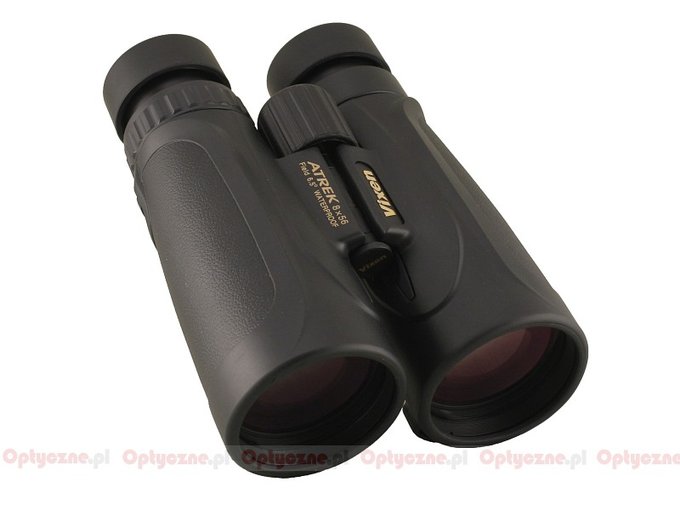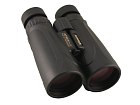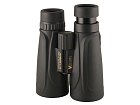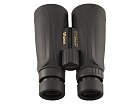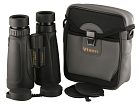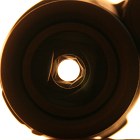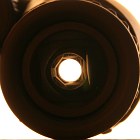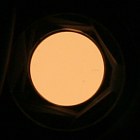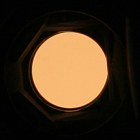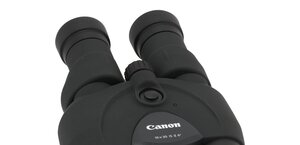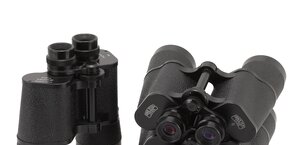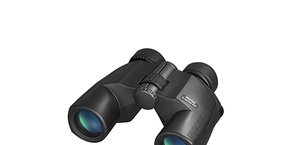Vixen Atrek HR 8x56 DCF
Afterwards, strange things started to happen. The company moved one part of its production unit to China in order to cut costs. The information flow has been failing ever since. It often happened that other products were available on the market, others were shown on the Japanese manufacturer’s site, others on a European site, and even different products were in printed catalogues. It was really difficult to make head or tail of all that mess - you never knew what was on the market, what was a new product, just launched, and what had already been withdrawn.
In fact, such a situation has been prolonged up to now. When I wanted to write something about the Atrek series I visited the original site of the Japanese producer; I clicked on the Binoculars/Fieldscopes section and all I got was an error message. The European page apparently assumes that everybody speaks German fluently because it is available only in that language. Fortunately there is full info about the Atrek series accessible there and, what’s more, the data provided agree with those from a printed catalogue which I have in front of me writing these words. Let’s get down to the facts, then.
The HR Atrek DCF series consists of as many as nine models with the following parameters: 8x25, 10x25, 8x32, 10x32, 8x42, 10x42, 8x50, 10x50 and 8x56. All binoculars are equipped with roof prisms made of BaK-4 glass in the Schmidt- Pechan system. All of them are waterproof and nitrogen-filled; they also sport a tripod exit. Their characteristic trait is a short minimum focus distance, which for most models amounts to only 1.0 meter and 1.5 meters for the biggest devices. The company assures that all air-to-glass surfaces are covered by high-class FMC layers. Contrary to some opinions, the Atrek series is manufactured in China, not in Japan.
The buyer gets a five-year-long guarantee as well as a case, a strap and caps for objectives and eyepieces included in box.
| Magnification | Lens diameter | Angular field of view | Prisms | Eye relief | Weight | Price |
|---|---|---|---|---|---|---|
| 8 | 56 | 114/1000(6.5o) | BaK-4/roof | 22 mm | 995 g | 1299 PLN |
Summary
Pros:
- good transmission,
- high class prisms made of BaK-4 glass,
- small dimensions for such parameters,
- pupils only slightly truncated,
- sharp image already from the distance of 1.4 metres,
- low astigmatism,
- correct white reproduction,
- relatively good workmanship quality.
Cons:
- lens a bit smaller that promised 56 mm,
- high chromatic aberration at the edge of the field of view.
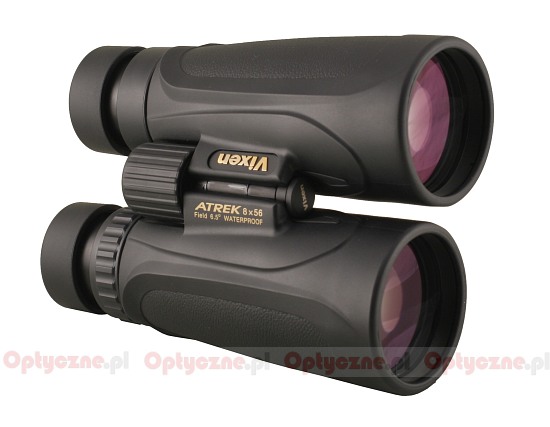 |
The Vixen HR Artrek 8x56 DCF binoculars didn’t make any serious slip-up in our test. Quite the opposite in fact – you can write more good than bad things about this instrument. We get here a 8x56 device and rather compact at the same time, equipped with prisms that don’t cause any significant vignetting. It is a great achievement because usually the weight and the dimensions of binoculars are reduced at the expense of prisms, which cause in turn a significant truncation of exit pupils. A relatively high transmission level also deserves some praise here, because almost 89% of light passing through in the visible spectrum centre is a very good result for a pair of roof-prism binoculars. To be even nearer perfection the device must have had a more flat transmission curve – now the binoculars distorts the colours a bit, letting pass 93% of red light but only 83% of blue light, which can be clearly seen on the transmission graph below.
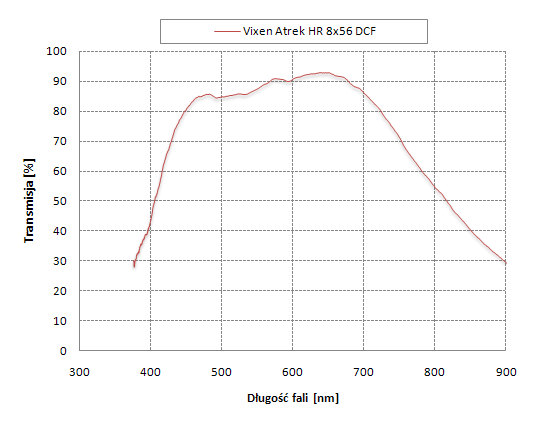 |
As we mentioned before there are almost no slip-ups. In most test categories the binoculars’ results are average or a bit higher than average. All in all, the Vixen collected as many as almost 120 points – exactly the borderline between good and very good level. Taking into account the binoculars’ price, which amounts to about 300 USD, we can confidently say that buying it you won’t waste your money.
A high level of competition in this price-quality market segment might cause a problem for the Vixen . Almost identical result was achieved by a roof-prism Eschenbach-sektor D compact 8x56 B which costs also about 300 USD. A bit better than the Atrek fared cheaper porro prism binoculars such as a Vixen Ultima 8x56 or a Delta Optical Titanium 8x56. If you are willing to spend about one hundred USD more you can try to find a renown Steiner Ranger 8x56 (Porro version) on special offer, which also performs better than the Atrek. The Vixen has some strong points though, so this device will be able to win a part of customers over for sure.
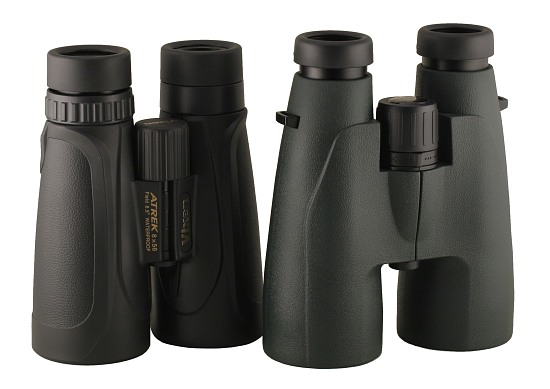 |




